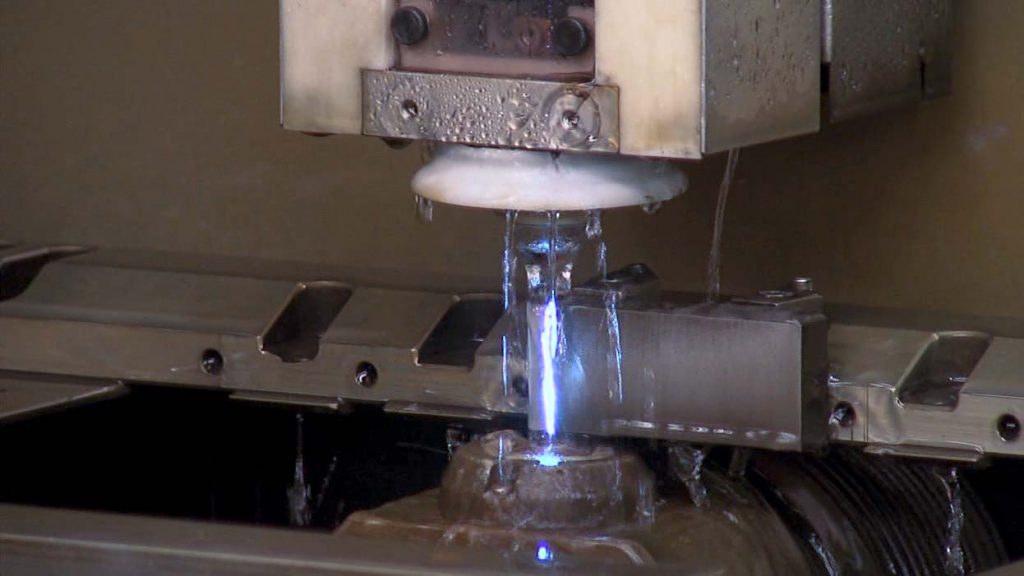Not everything can be processed by wire EDM machining. The processing pattern is analyzed and reviewed. According to the existing processing equipment, considering the feasibility of this process method, processing cannot be achieved in the following situations:
- The narrow gap is smaller than the diameter of the electrode wire plus the discharge gap.
- The internal angle of the pattern is not allowed to have R angle or the required R angle of the internal angle is smaller than the diameter of the electrode wire. Workpieces of non-conductive materials. Workpieces whose thickness exceeds the span of the wire frame.
- The processing length exceeds the effective stroke length of the X and Y carriage of the machine tool, and the workpiece requires high precision.
Under the condition of meeting the wire EDM process, according to the processing requirements of the parts, such as surface quality and dimensional accuracy requirements, it is necessary to decide whether to choose medium-speed wire EDM cutting or low-speed wire EDM cutting. For parts with high dimensional accuracy and good surface roughness, we should choose low-speed wire EDM processing.

Notes For Wire EDM Machining
1) Reasonable selection of workpiece materials
In order to reduce the deformation of the workpiece caused by wire EDM cutting, materials with good forging performance, good permeability and small heat treatment deformation should be selected. The material of the work piece should be heat treated according to the technical requirements.
2) Processing threaded holes
For the processing of closed holes and some punches, wire holes need to be processed before online cutting. The position of the threaded hole should be consistent with the machining starting point specified during programming.
3) Choose the type of electrode wire
Medium-speed wire EDM generally uses molybdenum wire with a diameter of 0.18 mm as the electrode wire, low-speed wire EDM machining generally uses brass wire, in addition to galvanized wire, etc. The diameter of the electrode wire can be based on the machining accuracy requirements. Try to choose electrode wire with a diameter not less than 0.2mm to obtain a higher cutting speed and reduce the risk of wire interruption during processing.
4) Clamping and correction of workpiece
According to the processing shape and size of the workpiece, select the appropriate clamping method to determine the position of the workpiece. If the clamping methods of plate parts, rotating parts, and block parts are different, you can choose special fixtures or self-designed fixtures to clamp the workpiece. After the workpiece is clamped, it must be corrected. Generally, it is to check the perpendicularity and flatness of the workpiece clamping, and correct the axial parallelism of the workpiece reference plane and the machine tool.
5) Threading And Schooling
Wrap the wire electrode correctly on each part of the wire running mechanism to keep the wire electrode under certain tension. Use appropriate methods to correct the verticality of the electrode wire, such as wire alignment with a aligner, wire alignment with sparks, etc.
6) Positioning of the electrode wire
Before wire EDM processing, the electrode wire should be accurately positioned to the starting coordinate position of the cutting. The adjustment methods include visual inspection, spark method, and automatic alignment. The current CNC wire-cutting machine tools all have the function of contact sensing, and they all have the functions of automatic edge finding and automatic center finding. They have high alignment accuracy and are very convenient for electrode wire positioning. The operation method varies from machine to machine.
7) WEDM Programming
WEDM programming is the focus of the entire process. The machine tool is processed according to the numerical control program. The correctness of the program directly affects the processing shape and processing accuracy. Most of the actual production uses automatic programming methods.
After the programming is completed and before the formal cutting process, the CNC program should be checked and verified to determine its correctness. The numerical control system of the wire cutting machine tool provides a method for program verification. The commonly used methods are: one is the drawing inspection method, which is mainly used to verify whether there is an error syntax in the program and whether it conforms to the drawing processing outline. One is the empty stroke inspection method, which can check the actual processing of the program, check whether there is collision or interference in the processing, and whether the machine stroke meets the processing requirements, etc., through the simulation of the dynamic processing situation, the program and the processing path route are fully verified .
Other Tips For Wire EDM Processing
For some punching dies with high dimensional accuracy requirements and small matching gaps between convex and concave dies, you can first try cutting with a thin sheet to check the dimensional accuracy and matching gaps. If you find that it does not meet the requirements, you should modify the program in time until the verification is qualified Formal cutting processing. During processing, electrical and non-electrical parameters can be adjusted according to the processing state to keep the processing in the best discharge state. After the formal cutting is over, do not rush to remove the workpiece, check whether the start and end coordinate points are consistent, if any problems are found, “remedial” measures should be taken in time.


